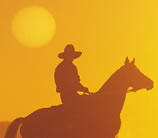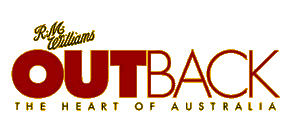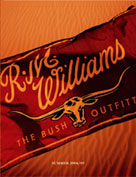OUTBACK PEOPLE
Running with the bulls
Story Heather Brown
Photos Andrew Rankin
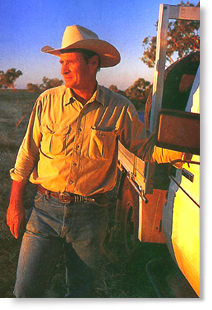 In
the beginning, the Northern Territory was a blank page, and its characters
were created in its own likeness - tough, wild and unpredictable.
In
the beginning, the Northern Territory was a blank page, and its characters
were created in its own likeness - tough, wild and unpredictable.
But, despite its size and its vast, brooding landscapes the Territory is now a settled place. The cattle are branded, major highways are sealed, and there are telephones, helicopters and tourists as far as the eye can see. Yet it remains one of the last great frontiers on earth.
The story of John Quintana, 52, is something of a frontier story for the 21st century, as romantic as it is remarkable. The former world champion bull rider arrived in 1987 from the United States with the kind of reputation that placed him on a pedestal in a place like the Territory. He bought Waterloo, a Kimberley station with plenty of wild cattle and few fences.
But once he had shaped it into a proper station, he discovered the curse of the isolated north - there weren't enough markets for his cattle. So he created his own. He began exporting live cattle in 1991, and by 1997 was exporting nearly $50 million worth a year.
The Asian crash hit him hard and he was written off as another fatality. But he bounced back and last year exported $40 million worth of cattle. That John Quintana has become something of a hero in the north is itself remarkable, for adulation in the Territory of a former American cowboy once might have been heresy. Not now. For many, Quintana has become an inspiration, the man who reminds them that anything is possible.
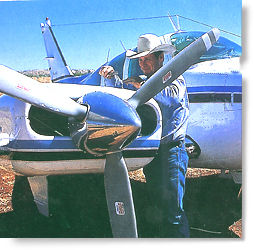 Forget
appearances. He is neither American nor Spanish. He is a Basque, a blood
member of what anthropologists believe is Europe's oldest race. Each morning
in July, six bulls run down the narrow streets of Pamplona.
Forget
appearances. He is neither American nor Spanish. He is a Basque, a blood
member of what anthropologists believe is Europe's oldest race. Each morning
in July, six bulls run down the narrow streets of Pamplona.
Each evening, the crowds gather to party, drink and dance. For the Basque, the bull is a symbol of courage and strength.
And the blood runs true. At Carbeen Park homestead - Quintana's Katherine (NT) property - every fence is painted terracotta red, and it seems more hacienda than homestead.
Inside the house there are stone floors and Navajo rugs, cowboy boots, Vaquero ropes, bulls' horns and paintings of another place where the horses come down from the mountains and the snows come down in the fall.
"Of course it looks Spanish," he
says with a sigh. "That's because I am." ![]()
Full story: Issue 16, April/ May 2001
